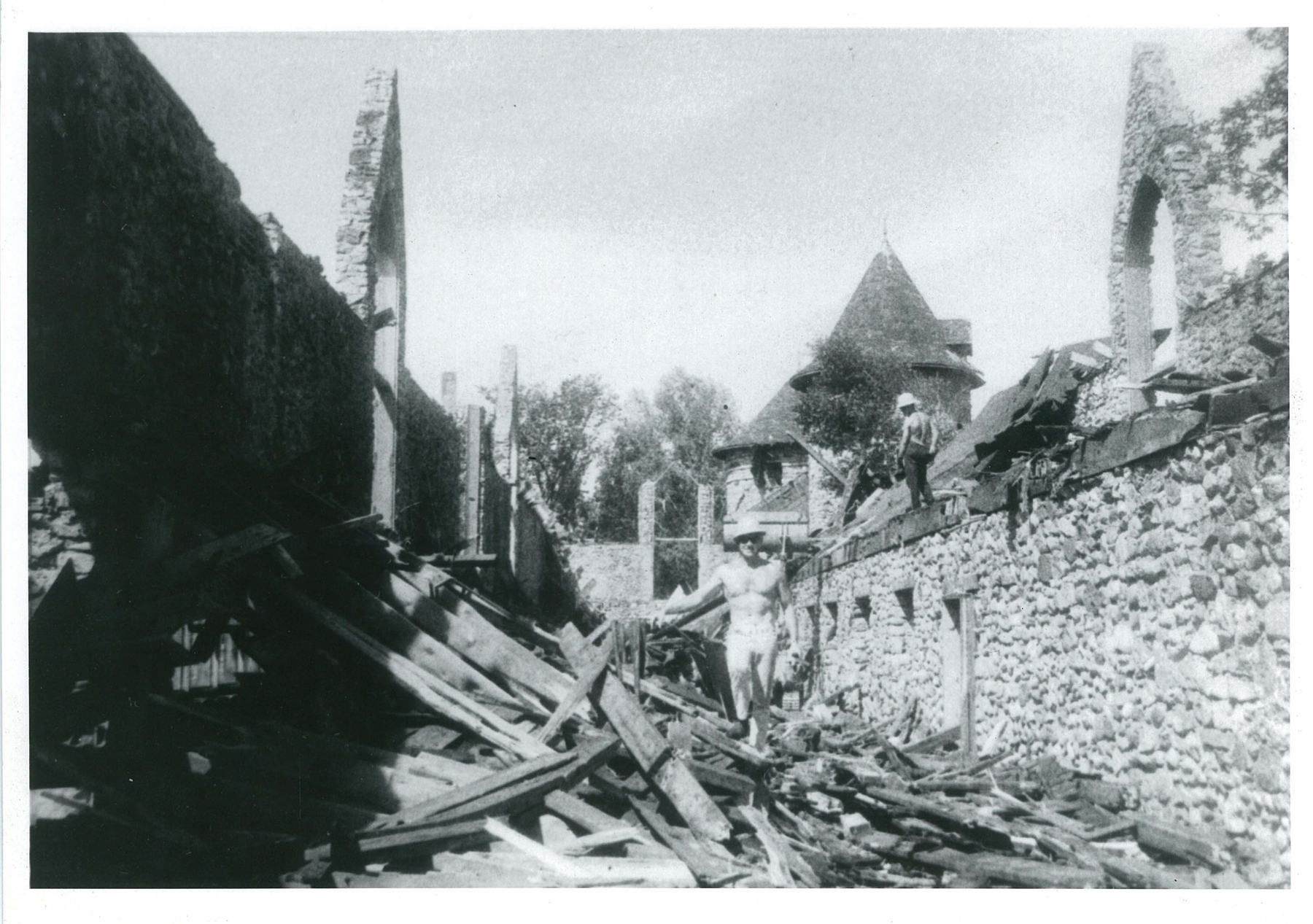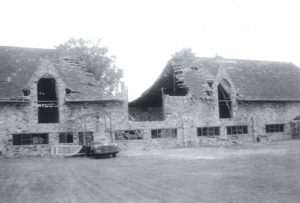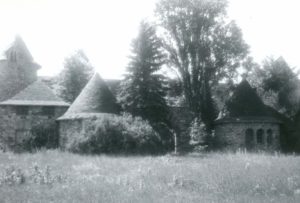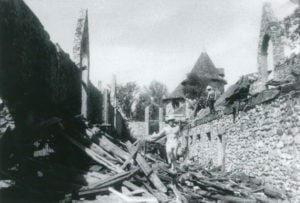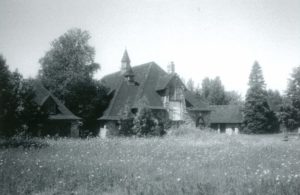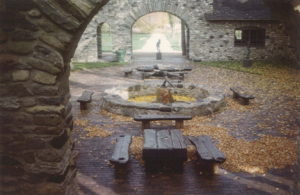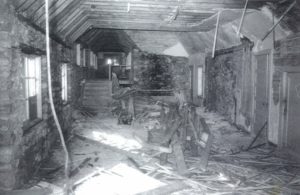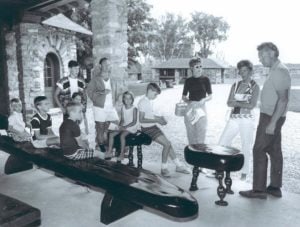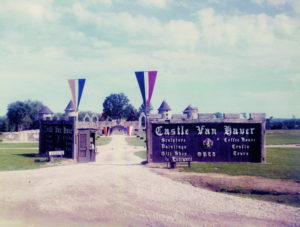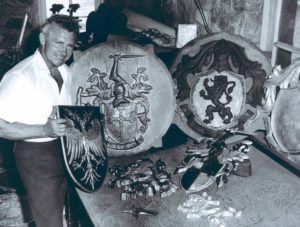After Loeb Farms officially closed in 1927, the buildings and remaining property were used solely for storage over the next thirty years, and eventually began to fall into disrepair. In the 1960s, the large empty stone walls caught the attention of a man from Muskegon, Michigan. John VanHaver was a talented artist and sculptor with a background in metallurgy and metal casting. VanHaver envisioned rescuing the property by creating an artists’ mecca with a Renaissance theme. He contacted the Loeb Family and was eventually successful in purchasing one hundred acres of the original Loeb Farms property, including the barns, office, blacksmith shop and manager’s house. Renovations began soon after, and the property was renamed Castle VanHaver.
There was a lot of work to be done before the first visitors could be welcomed into Castle VanHaver. Time and the elements had damaged the barns and the roofs in both the East and West wings had collapsed. The top safety priority was to clear away the roof debris. Less than a year after purchase, the roof of the dairy barn collapsed, causing further work for John VanHaver. Renovations to Castle VanHaver were a labor of love that took more than three years. Along the way, VanHaver added a few Renaissance flourishes of his own, including the large Romanesque arch and portcullis at the King’s Courtyard Gallery Doorway. Part of the original horse barn was converted into a foundry for producing original art of cast aluminum.
Castle VanHaver employed over twenty people. Just as Albert Loeb before him, John VanHaver was well respected by his employees, as well as the Charlevoix community. Castle VanHaver opened to the public for tours on July 2, 1966. Heraldic flags proudly stood in the new entrance as visitors swarmed to The Castle, thrilled to finally wander the grounds which had been closed to the public for decades.
